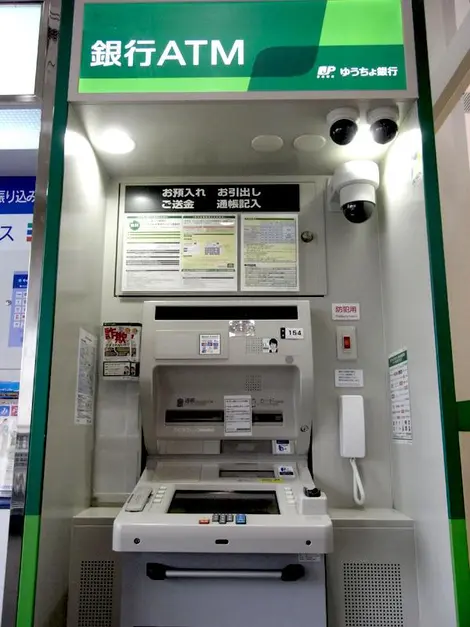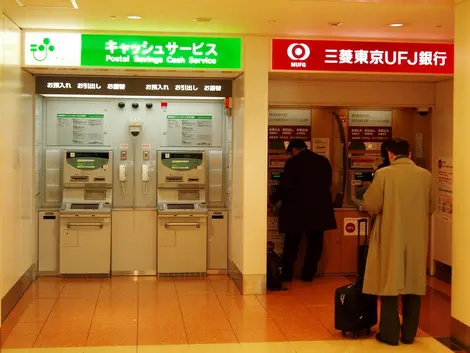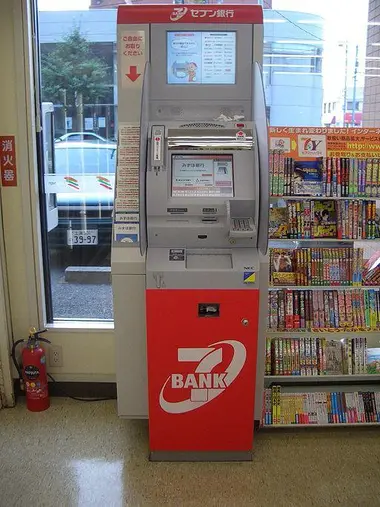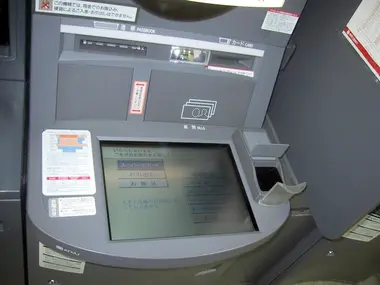What you need to know before going to Japan: how to withdraw money?
Traveling to Japan requires careful preparation, especially when it comes to managing your money on the ground. Although the country is renowned for its modernity, cash is still widely used. So it's essential to know how to access cash easily during your stay. Here's a complete guide to managing your finances during your trip to the Land of the Rising Sun, including ATMs, bank cards and precautions to take. Whether you're in Tokyo, Kyoto or more rural areas, this information will enable you to enjoy your stay without worrying about your means of payment.
Payment methods in Japan: cash vs. credit card
In Japan, cash remains the preferred means of payment in many situations. Contrary to what you might expect from a technologically advanced country, many shops, restaurants and even some hotels only accept cash. According to statistics, around 80% of transactions in Japan are still carried out in cash.
However, the use of credit cards is growing, especially in major cities and tourist areas. International credit cards such as Visa and Mastercard are generally accepted in department stores, hotel chains and high-end restaurants. American Express is less widespread. It is important to note that chip and PIN cards are preferable to magnetic stripe cards.
For small everyday purchases, public transport and visits to less touristy places, it is strongly recommended to carry a substantial amount of cash at all times. The Japanese themselves are accustomed to carrying sums that may appear high to Western eyes, often between 30,000 and 50,000 yen (around 200 to 350 euros).
Where can I find ATMs in Japan?
ATMs are plentiful in Japan, but not all of them accept foreign cards. Here are the main places where you can withdraw cash:
1.Japan Post ATMs: These are the most reliable ATMs for foreign cards. They can be found in most post offices in the country, with over 20,000 ATMs spread throughout the country. They generally accept Visa, Mastercard and sometimes American Express.
2.Konbini (convenience store) ATMs : Chains such as 7-Eleven, Family Mart and Lawson often have ATMs accessible 24/7. Those at 7-Eleven (known as Seven Bank) are particularly convenient for foreigners.
3. ATMs at airports: When you arrive, you'll find ATMs at major airports such as Narita and Haneda in Tokyo, or Kansai near Osaka.
4. Japanese banks: Some major banks, such as MUFG, Mizuho and SMBC, have ATMs that accept foreign cards, but they are fewer in number and sometimes hard to find.
To locate the nearest ATM, you can use the JAPAN POST BANK ATM Finder application or Seven Bank's online ATM locator.
Types of bank cards accepted and withdrawal limits
The most widely accepted cards in Japan are Visa and Mastercard. American Express and Discover are also accepted in some places, but less widely. It's important to note that chip and PIN cards are preferable to magnetic-stripe cards, which are becoming less widely accepted.
Withdrawal limits vary by ATM and bank:
- Japan Post ATMs: generally 50,000 yen per day
- Seven Bank (7-Eleven): up to 100,000 yen per day
- Other banks: often limited to 50,000 yen per transaction
It's advisable to check with your bank about foreign withdrawal limits before you leave. Some banks impose daily or weekly limits on international withdrawals.
Japanese ATM opening hours
Contrary to popular belief, not all ATMs in Japan are open 24 hours a day. Opening hours vary according to the type of ATM:
1.Konbini vending machines : Generally accessible 24/7, these are the most convenient for travelers.
2. Japan Post ATMs: Opening hours vary according to the size of the post office. Larger ones are often open from 7am to 11pm, while smaller ones generally close at 5pm. Some larger post offices in busy areas may have ATMs open 24 hours a day.
3. Bank ATMs: Most operate from 8am or 9am to 9pm on weekdays, with shorter opening hours at weekends. Some may be closed on Sundays and public holidays.
It is therefore advisable to plan your withdrawals in advance, especially if you are traveling to less urban areas where 24-hour ATMs may be rare.
Bank charges and exchange rates for withdrawals in Japan
When withdrawing money in Japan with a foreign card, there are several types of fees to consider:
1. Withdrawal fees: Japanese banks generally charge fees for the use of their ATMs, ranging from 108 to 216 yen per withdrawal. Some ATMs, such as Seven Bank, may be free of charge.
2. Your bank's charges: Your bank may apply charges for withdrawals abroad, often a percentage of the amount withdrawn (on average 2.5% to 3%) plus a fixed charge per transaction.
3. Exchange rate: The exchange rate applied is generally that of the day, set by your banking network (Visa, Mastercard, etc.). This is often more advantageous than the rate offered by foreign exchange bureaus.
To minimize these costs, consider opening an account with an online bank specialized in travel, such as Revolut or N26, which often offer more advantageous conditions for foreign transactions. You can also opt for no-fee credit cards abroad, offered by some traditional banks.
Practical tips for withdrawing money in Japan
To optimize your cash withdrawals in Japan and avoid inconvenience, here are a few practical tips:
1. Tell your bank about your trip: Inform your bank of the dates of your stay in Japan to avoid having your card blocked on suspicion of fraud.
2. Carry several cards: Always have a back-up solution in case your main card is lost or stolen.
3. Prefer large withdrawals: To limit costs, make large withdrawals rather than numerous small transactions.
4. Check limits: Make sure you know your daily and weekly withdrawal limits, and increase them if necessary before you leave.
5. Use konbini or post office ATMs : These are the most reliable for foreign cards.
6. Keep your receipts: In the event of a problem, they may be useful for disputing a transaction.
7. Always carry cash: Even in big cities, some establishments only accept cash.
Precautions and alternatives for never running out of cash
Despite all these precautions, it can happen that you run out of cash. Here are a few alternatives:
1. Change money before departure: Take part of your budget with you in yen as soon as you leave France.
2. Western Union: In an emergency, you can have money sent to you via Western Union, available at many post offices in Japan.
3. Prepaid cards: Some travel agencies offer prepaid yen cards, a handy way to manage your budget.
4. Mobile payment applications: Applications such as PayPay are gaining in popularity in Japan, and can be an alternative in some shops.
5. Ask for help: As a last resort, don't hesitate to contact the French embassy or consulate in the event of major financial difficulties.
Finally, don't forget that ATMs may be rare in rural areas or on small islands. Always carry sufficient cash if you venture outside the major cities. For example, on the island of Shikoku, outside major cities such as Takamatsu or Tokushima, or in remote areas such as the Shiretoko peninsula, ATMs may be widely spaced.
By following these tips, you should be able to manage your money efficiently during your stay in Japan, enjoying your trip to the full without worrying about your means of payment. For a smooth arrival, consider our transfer services from various airports in Japan.















